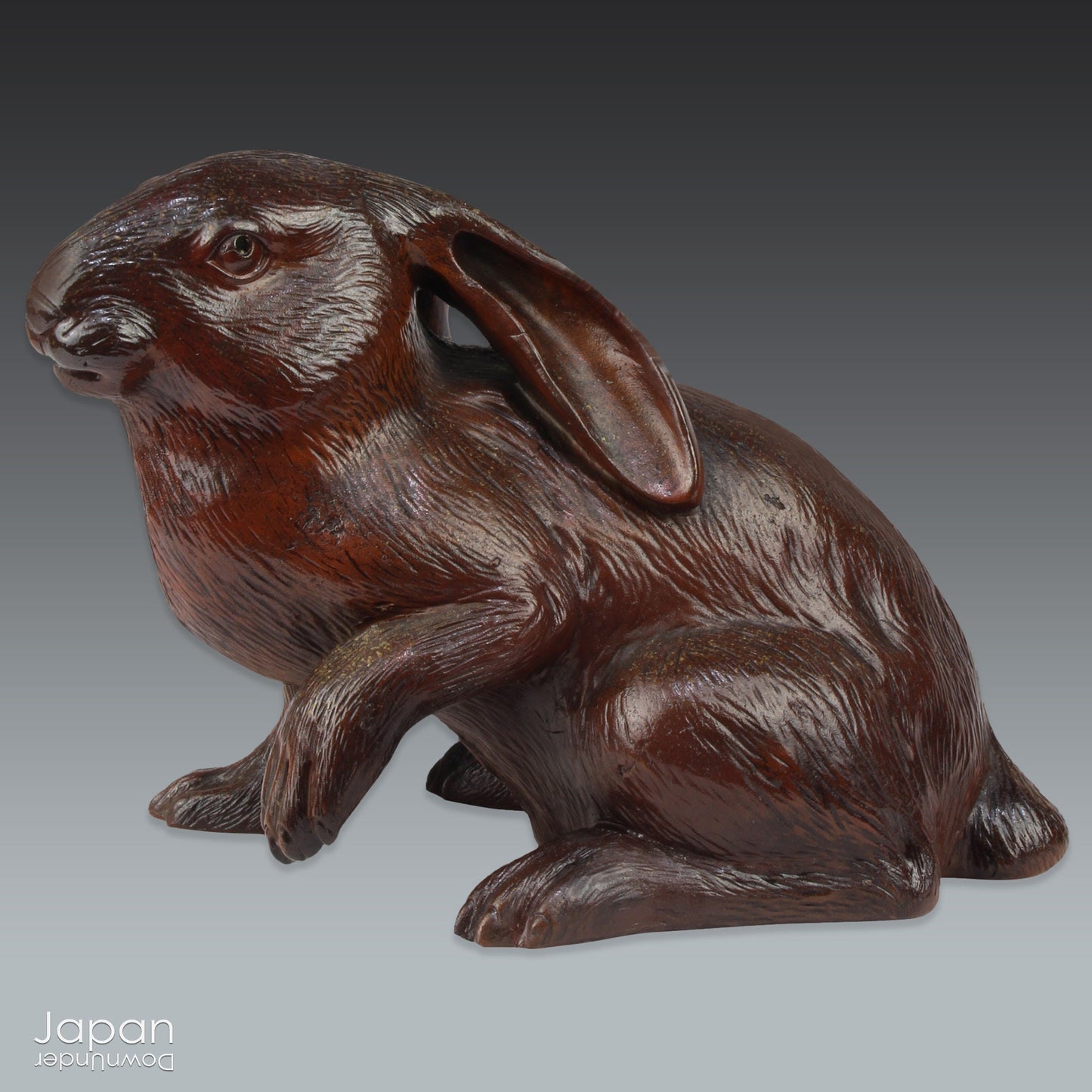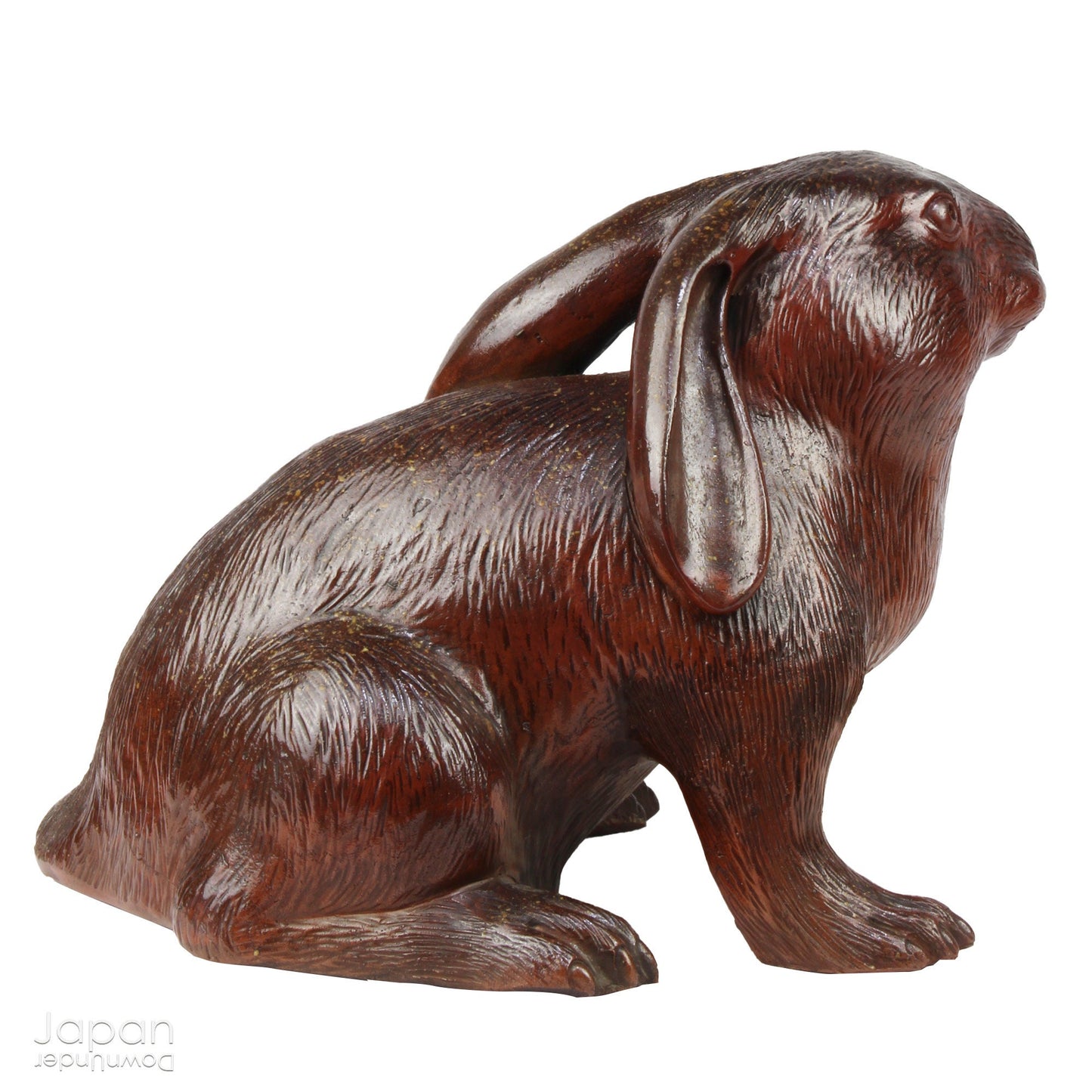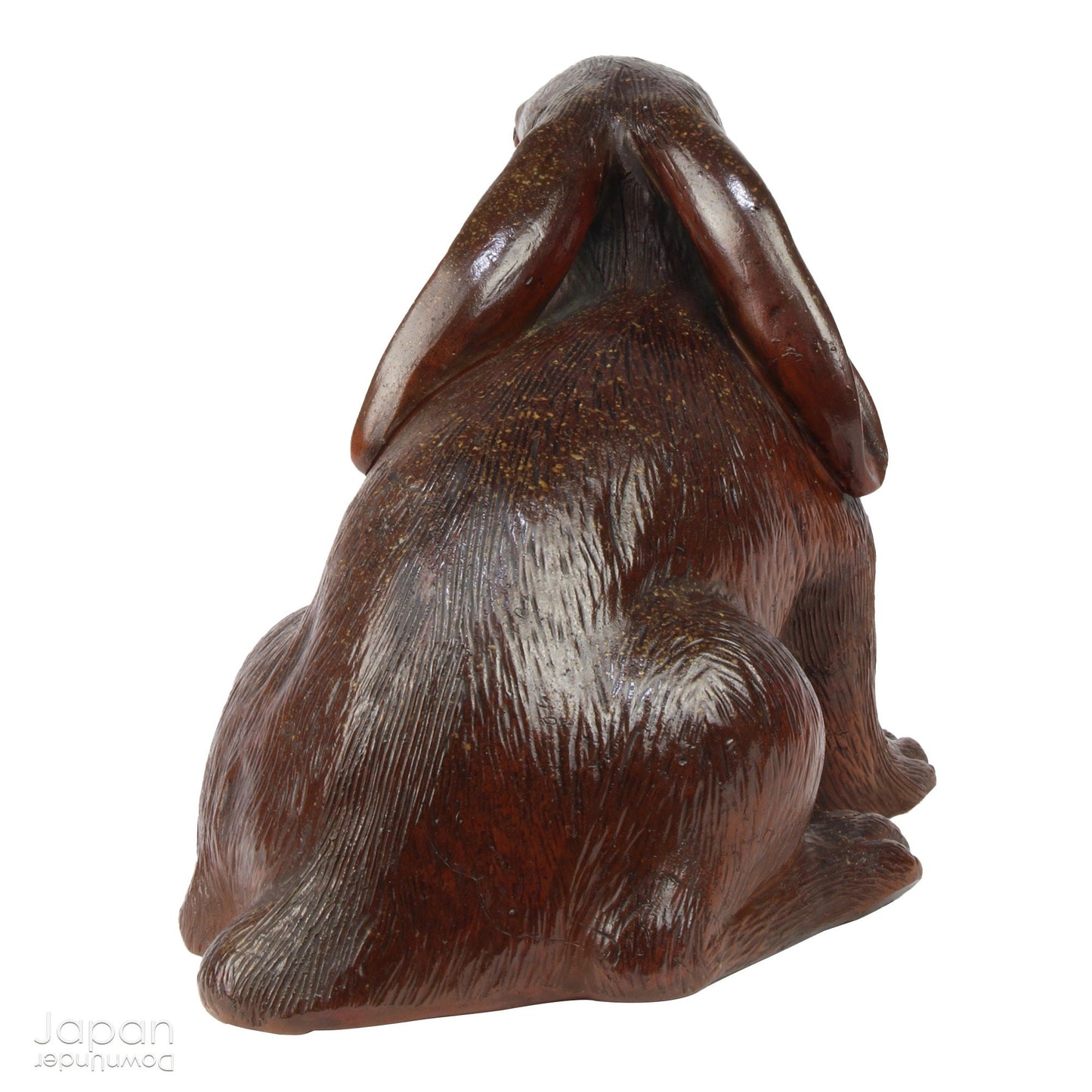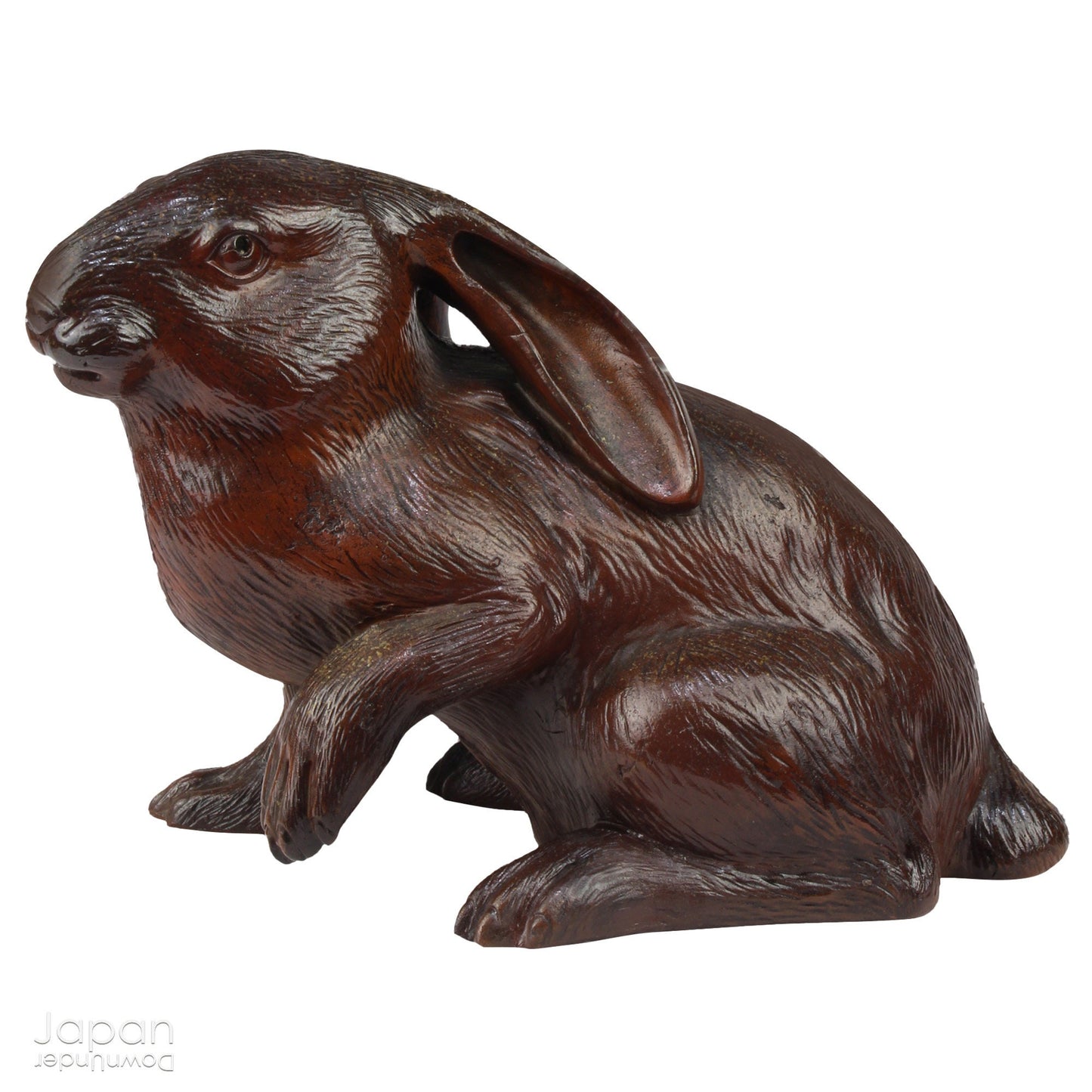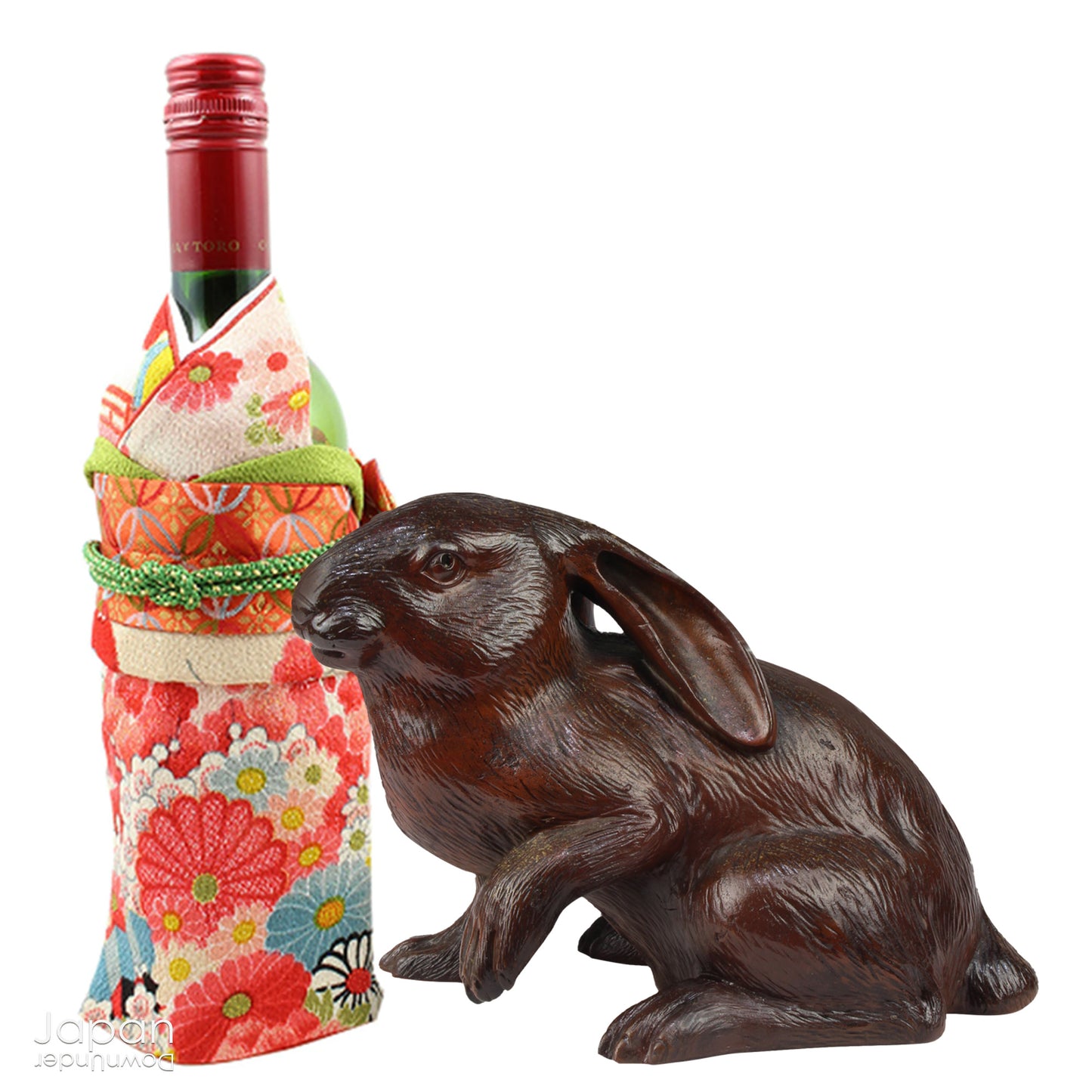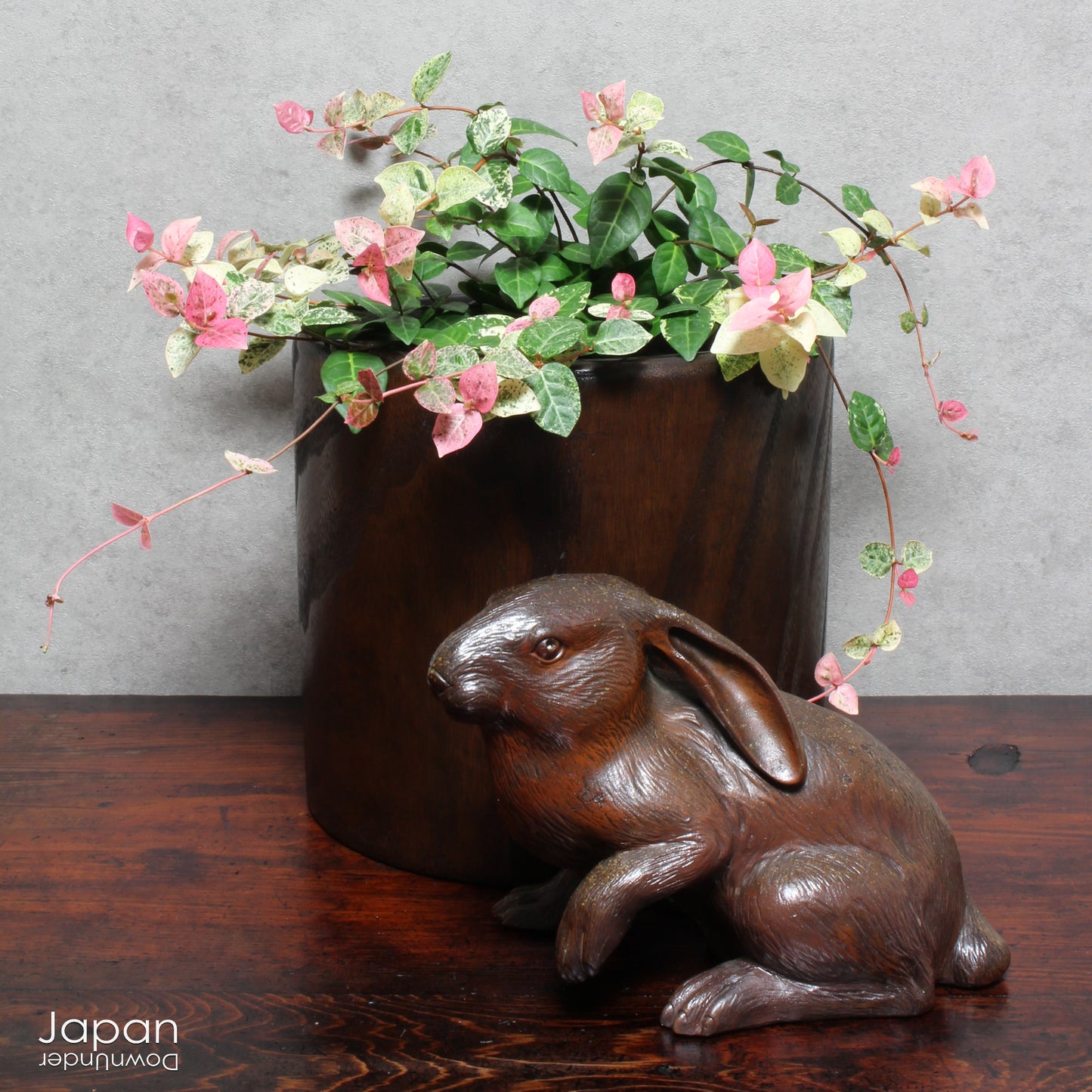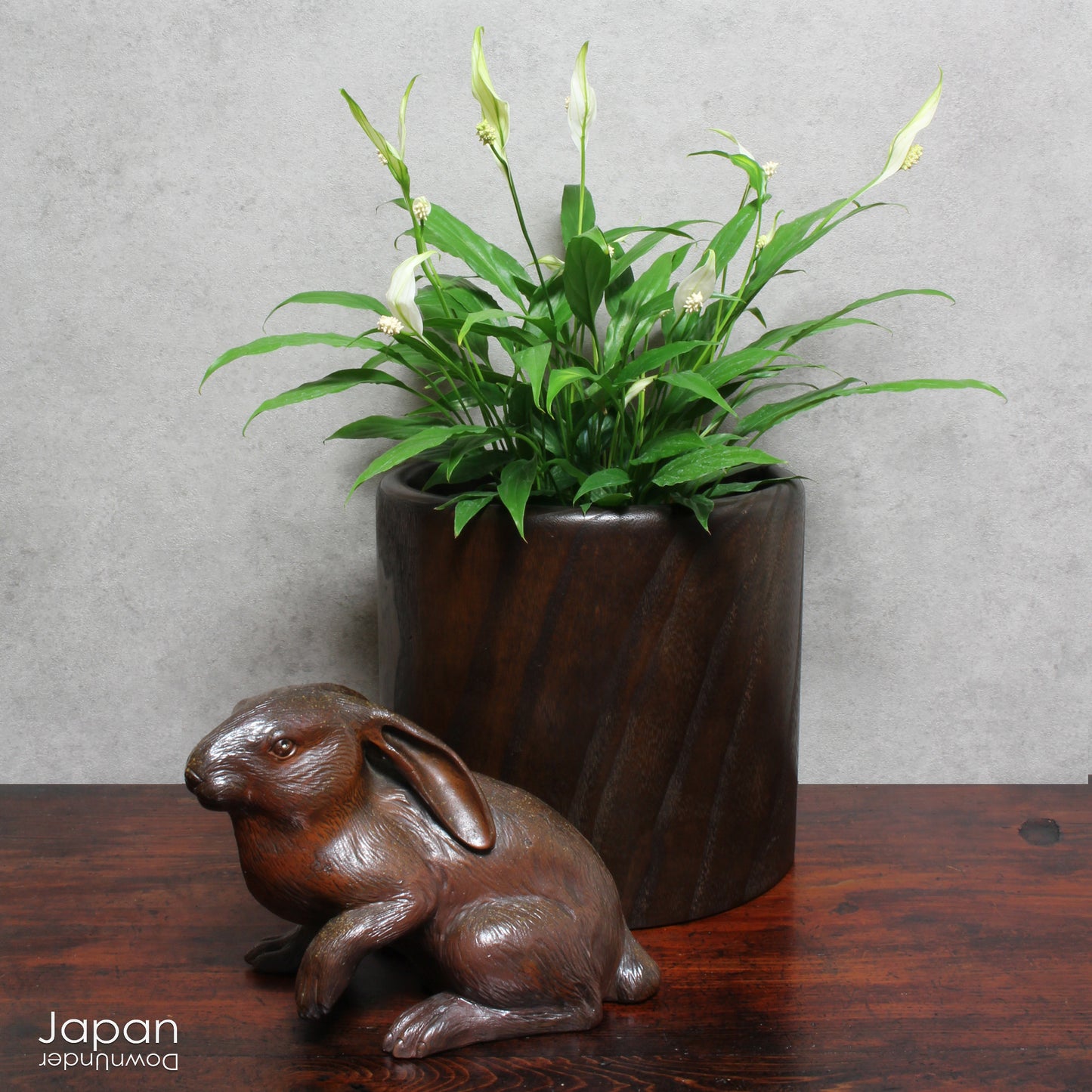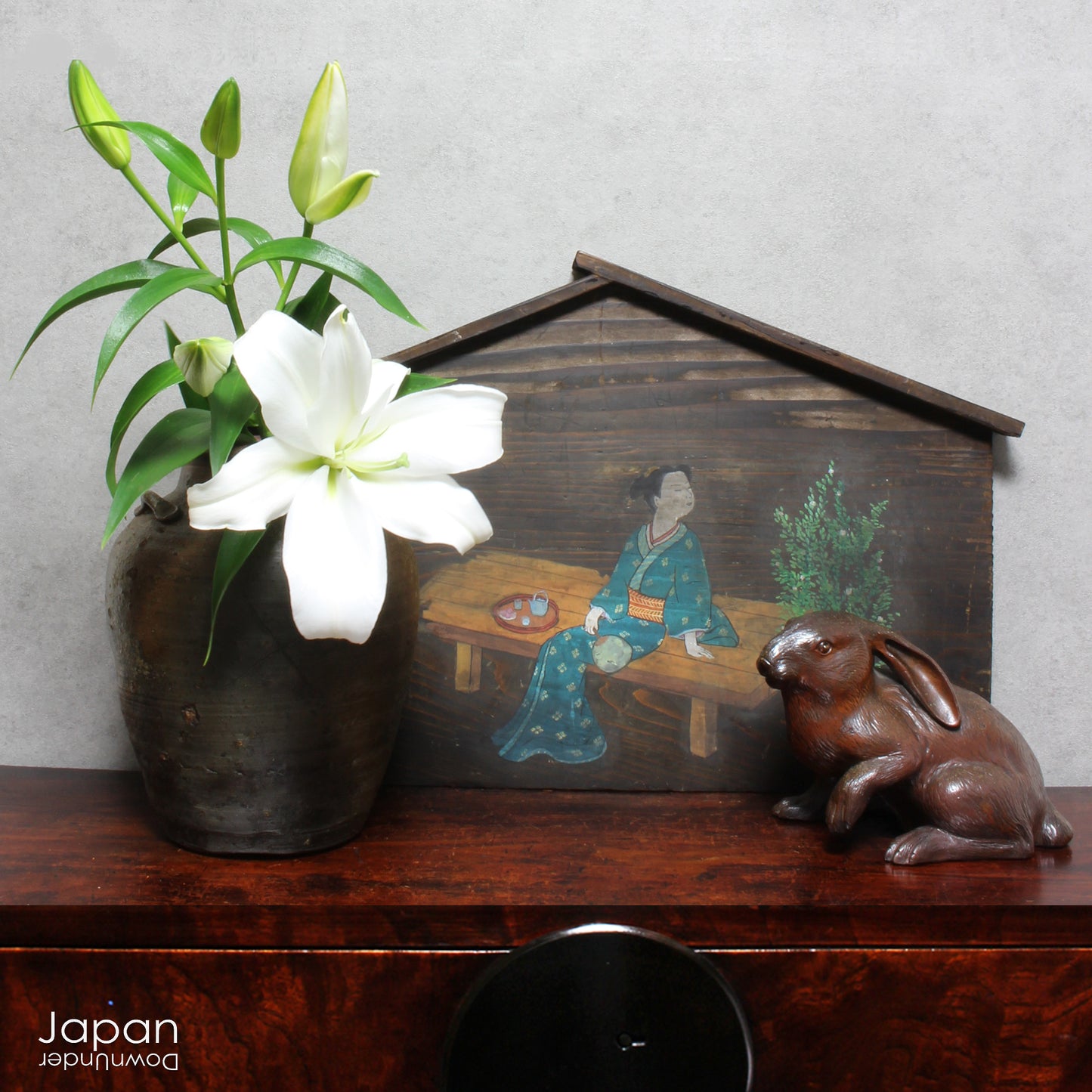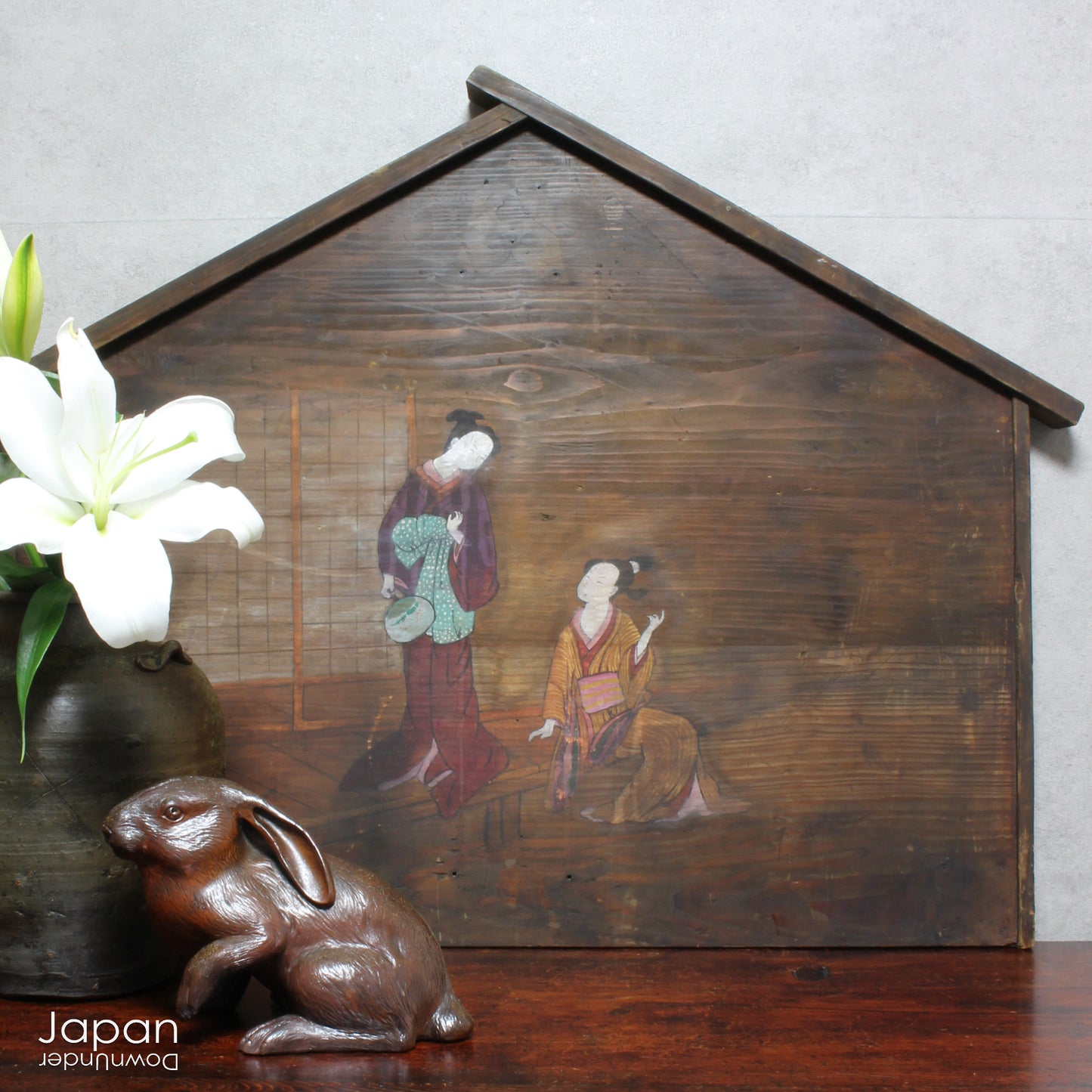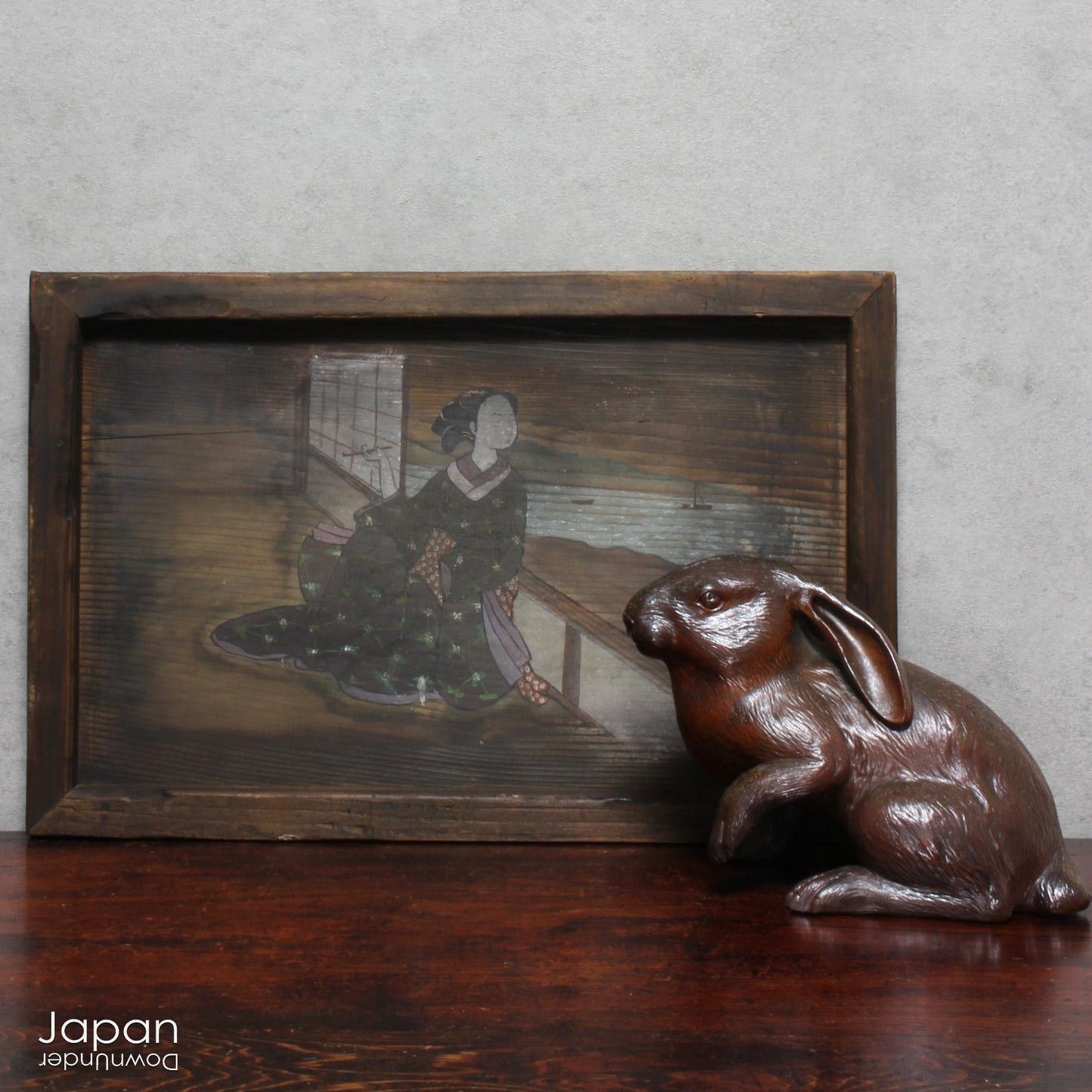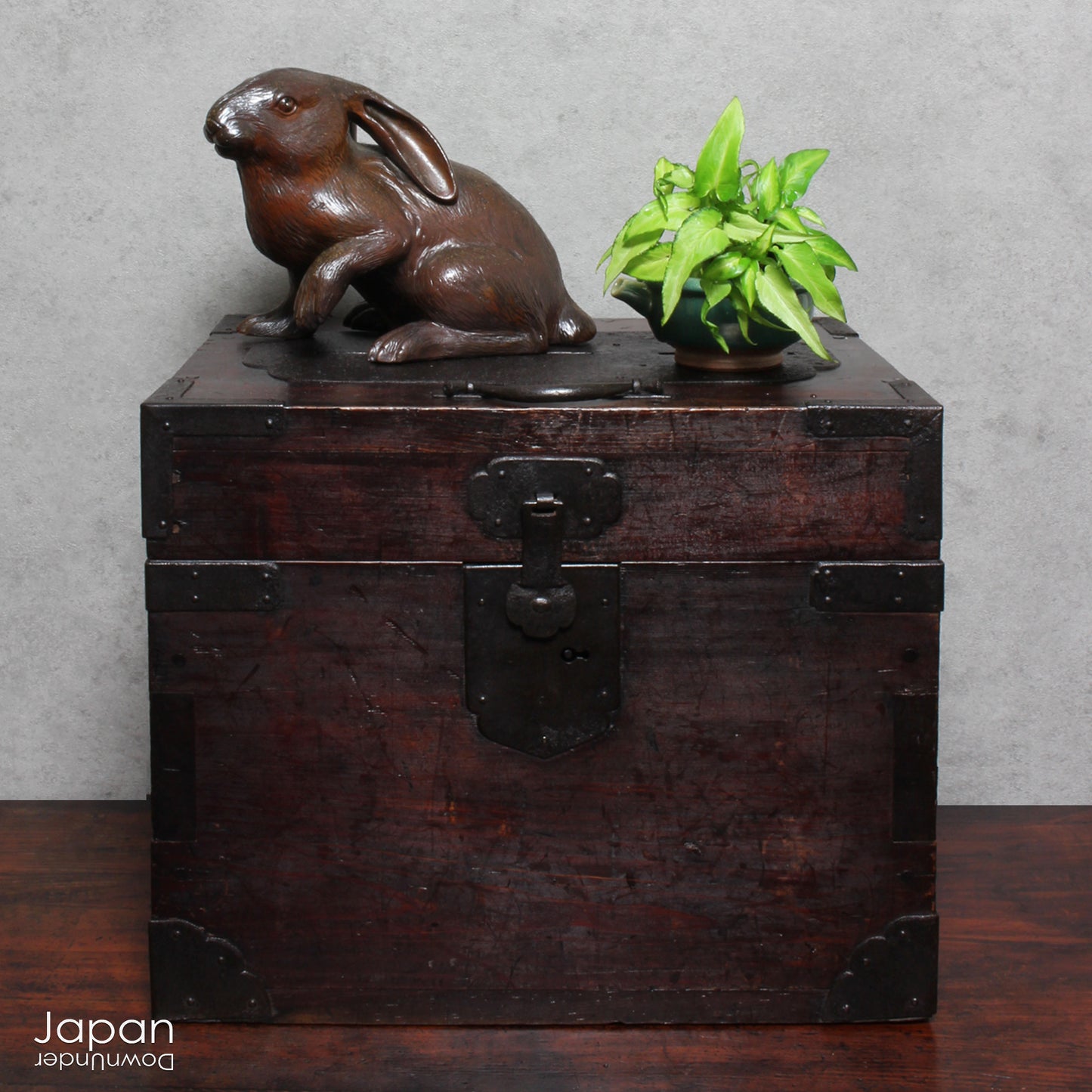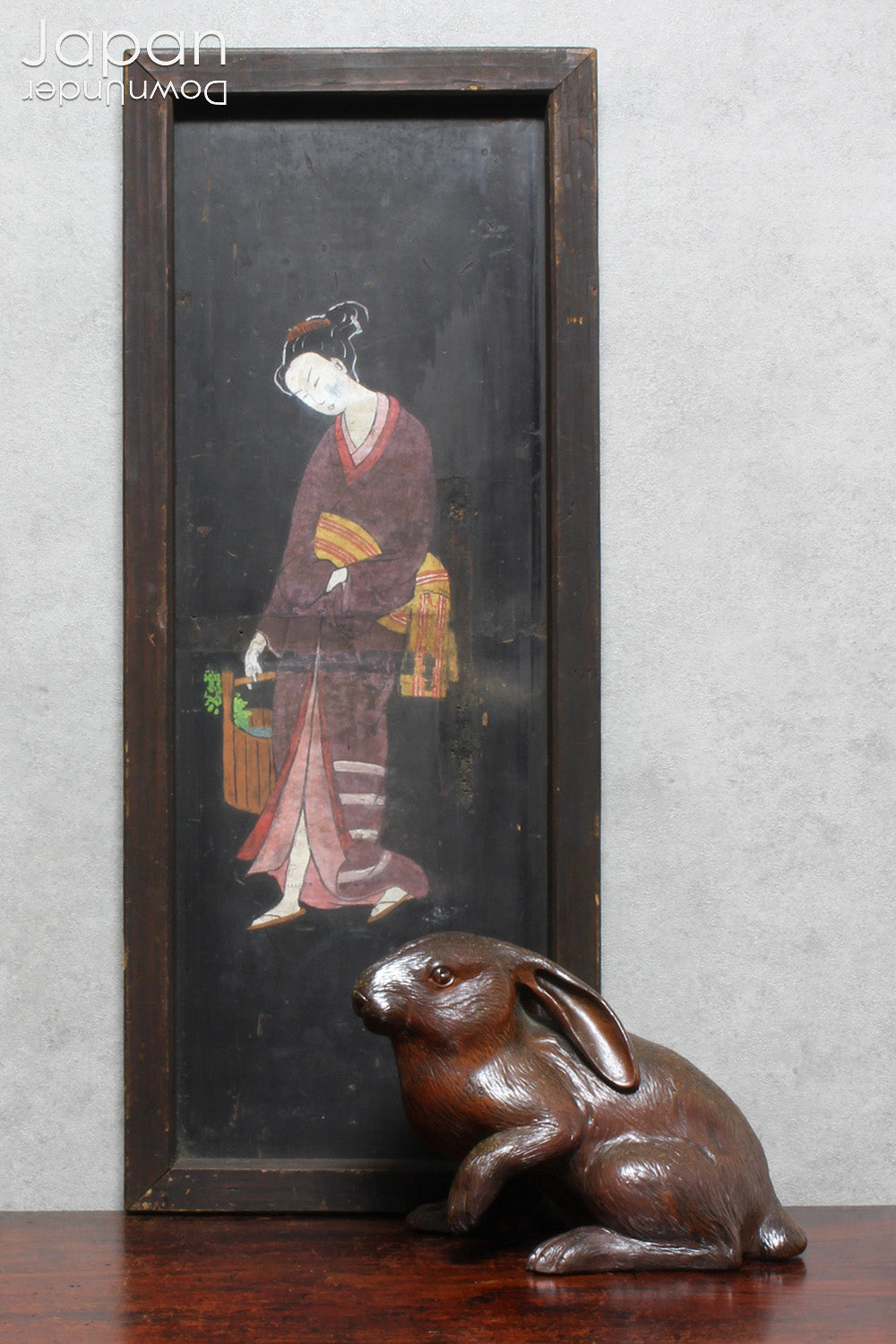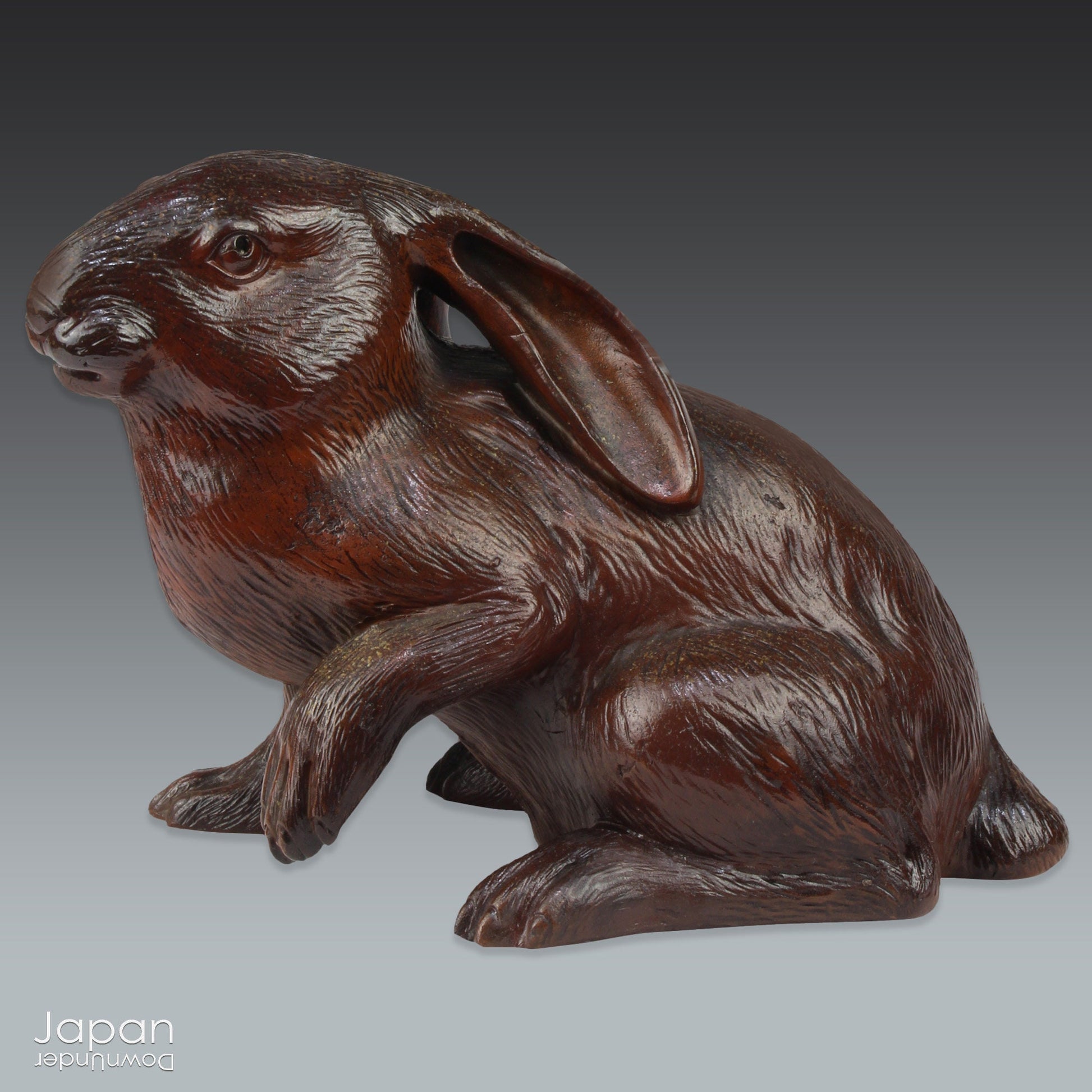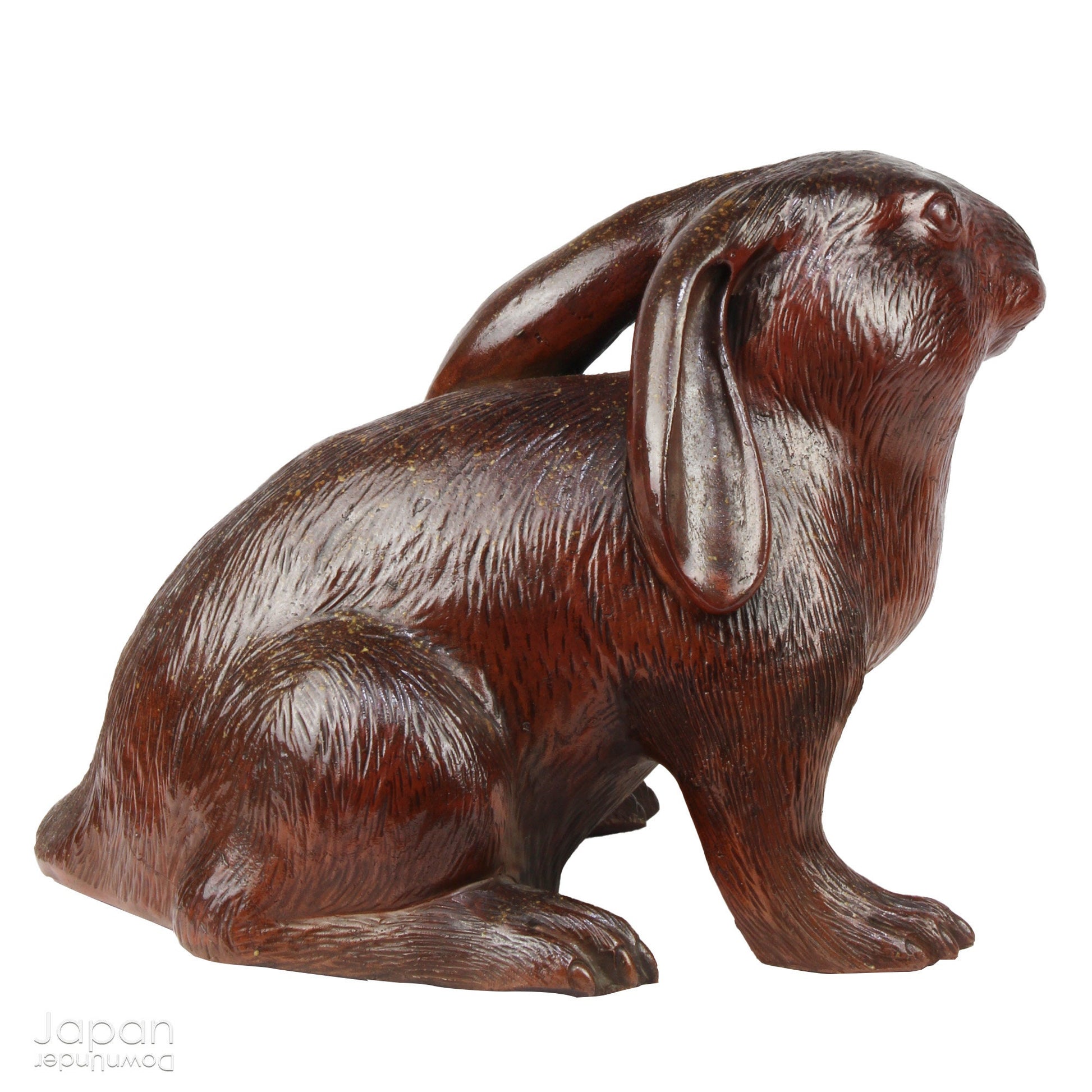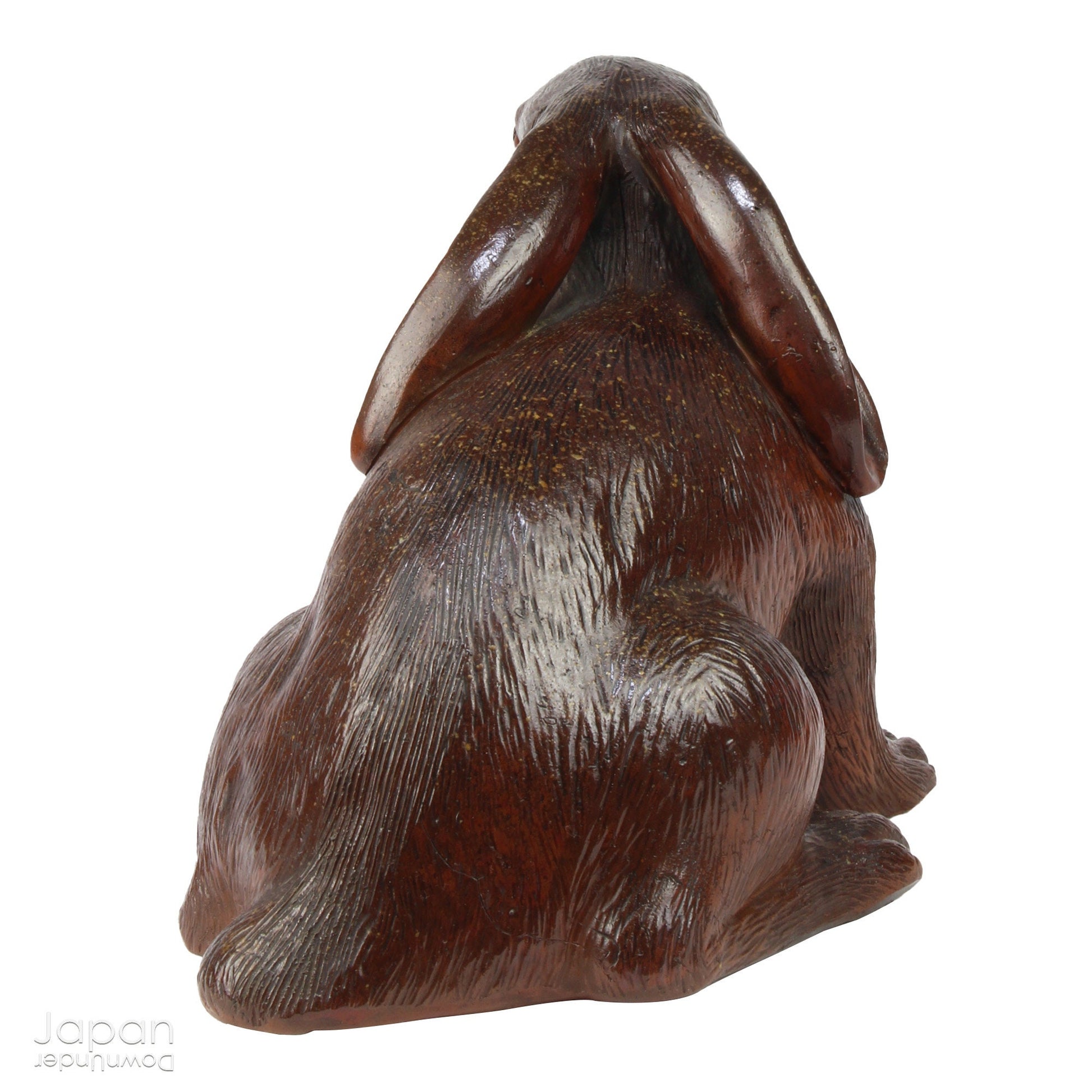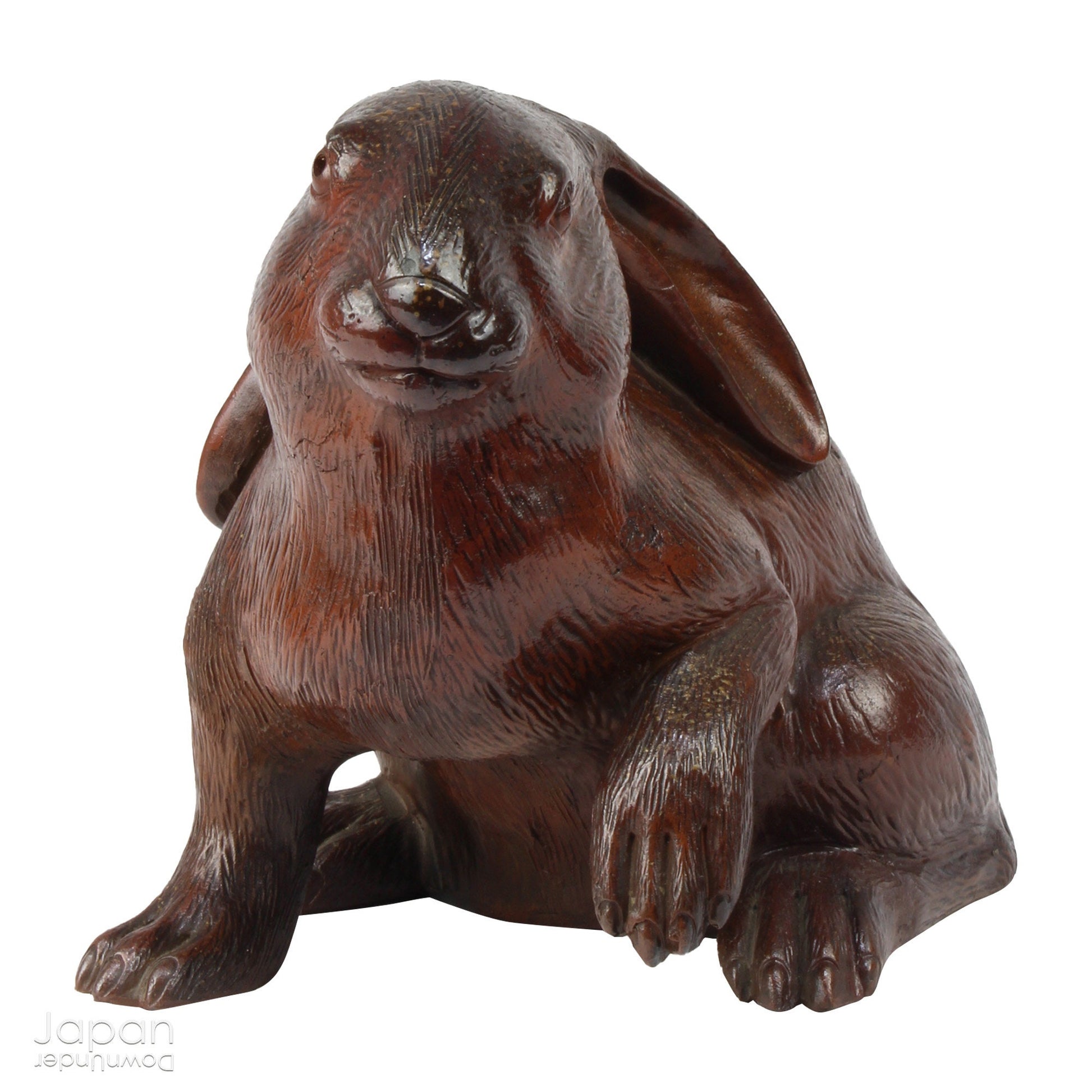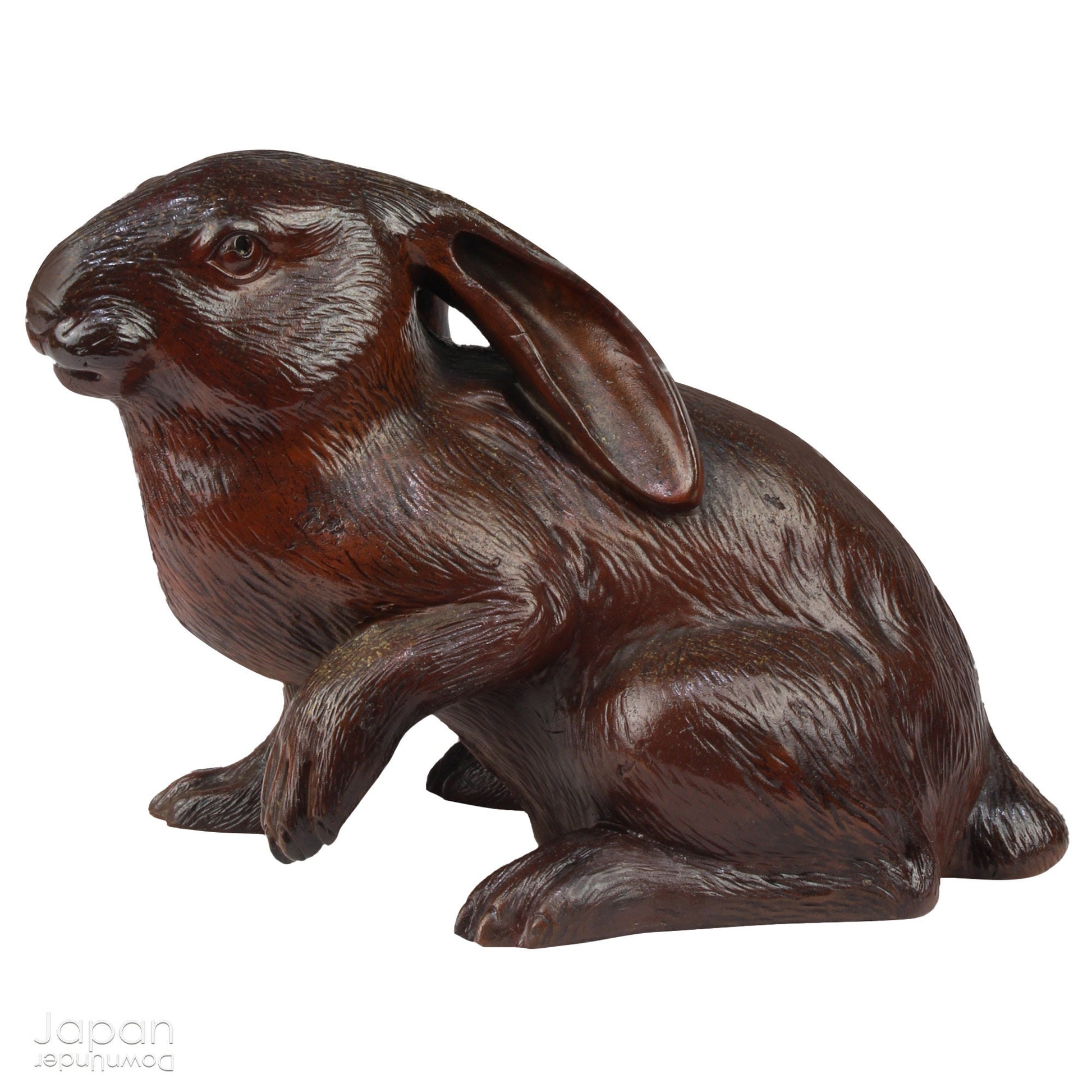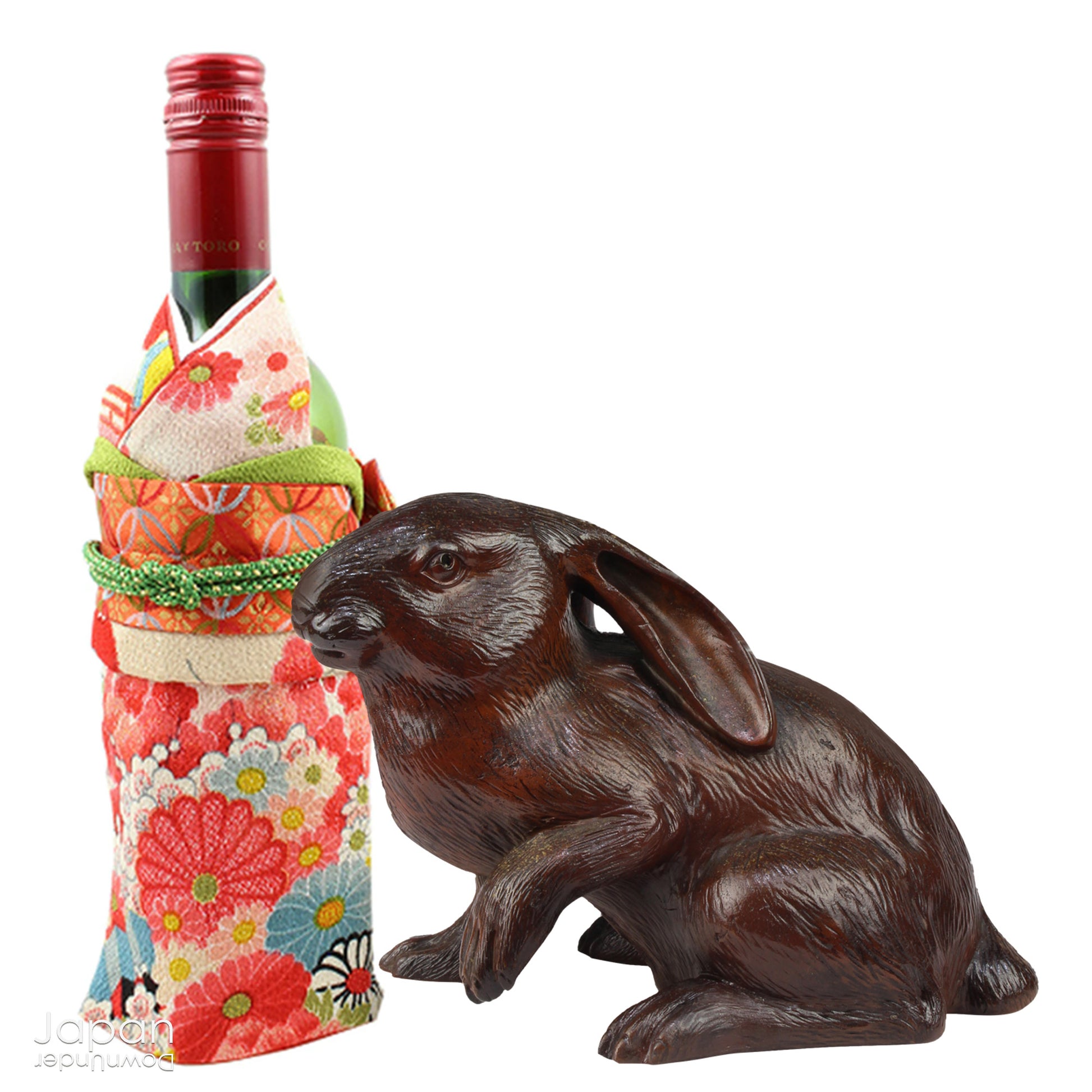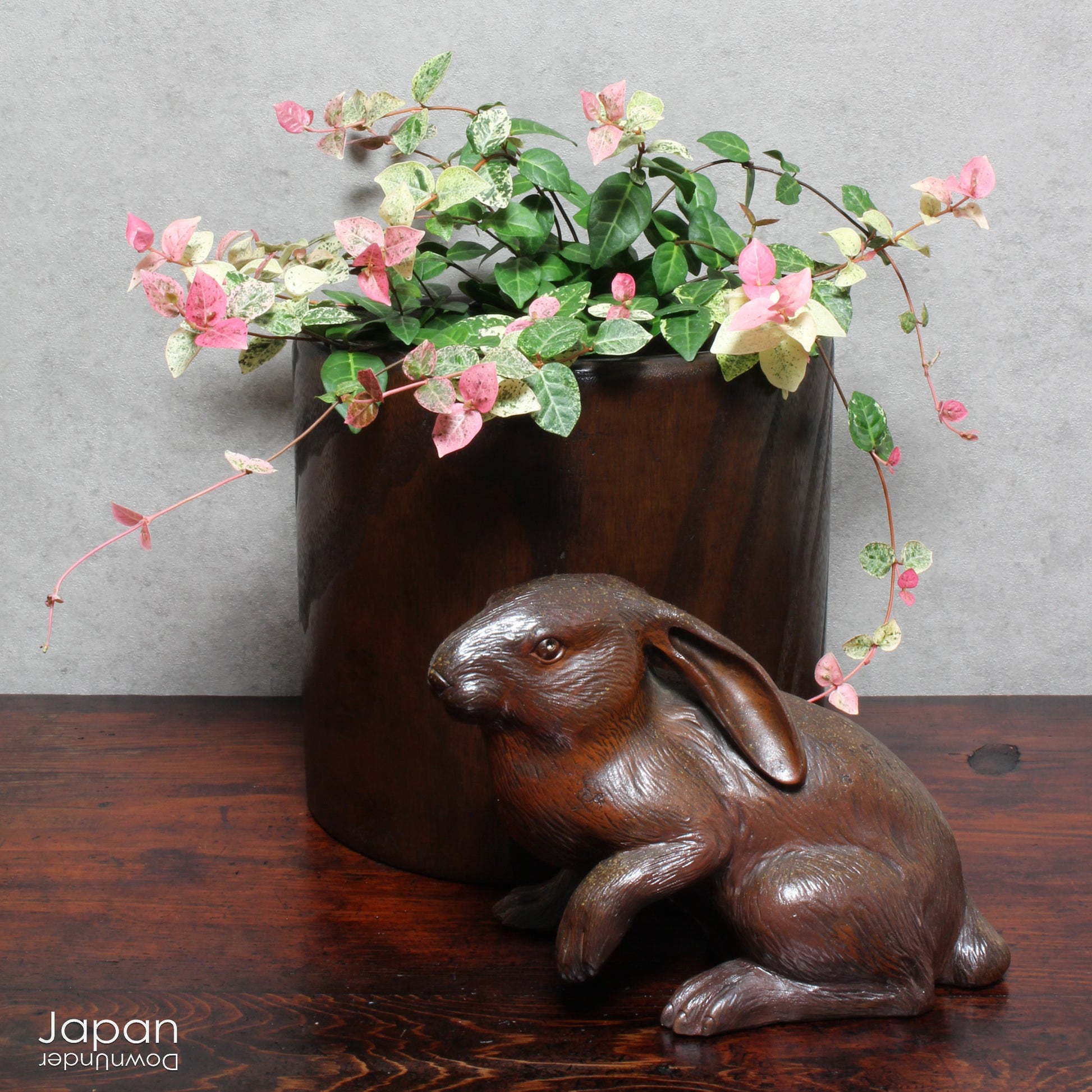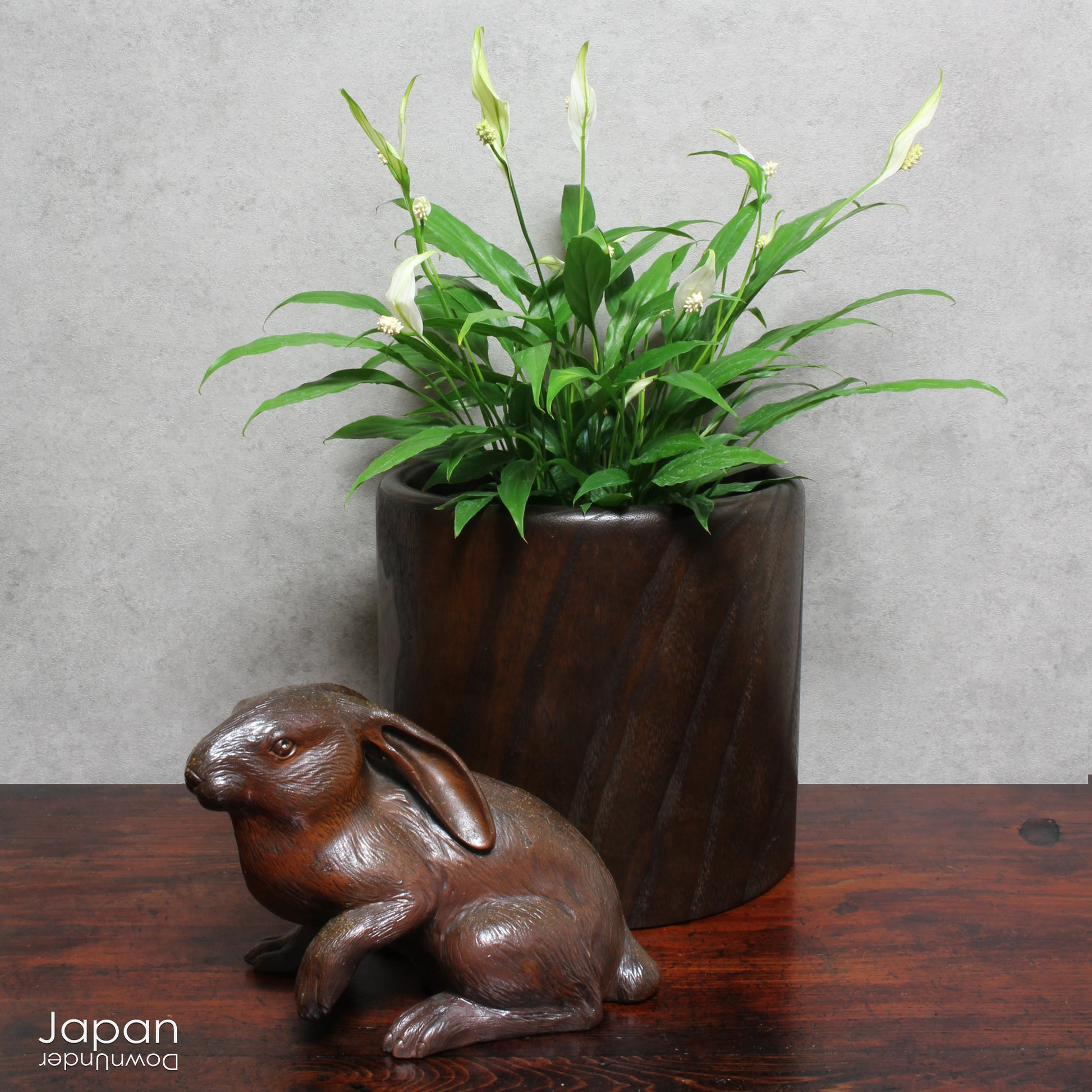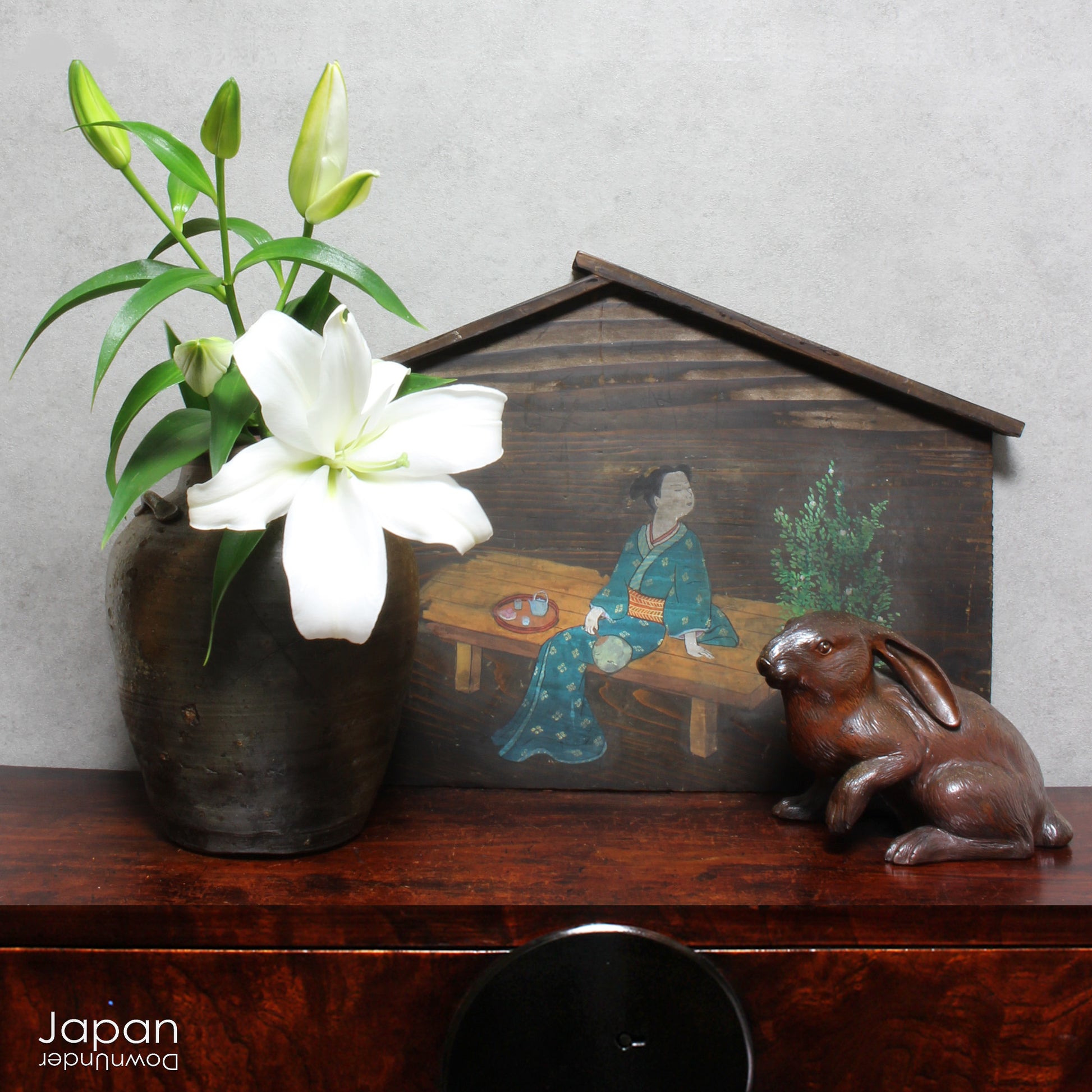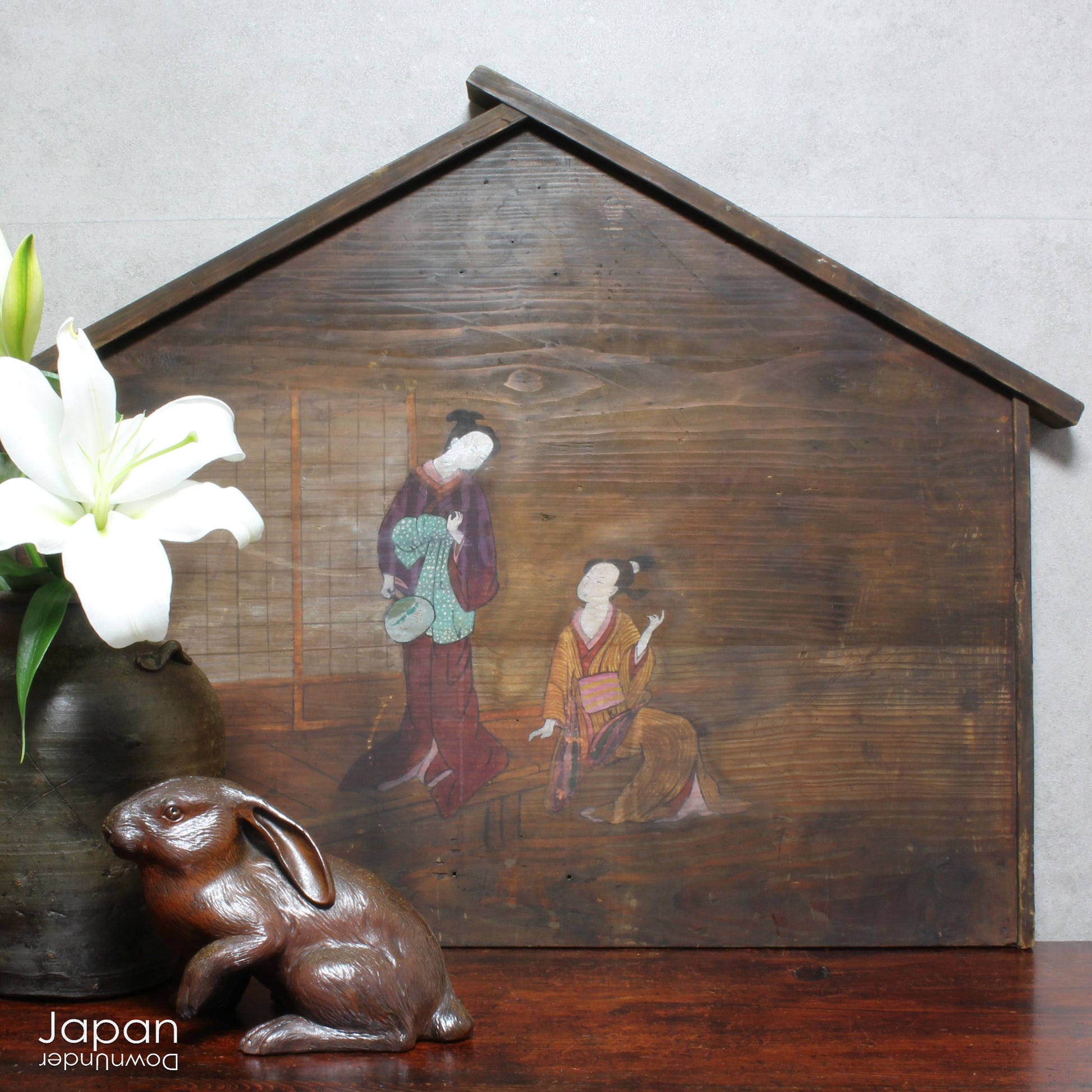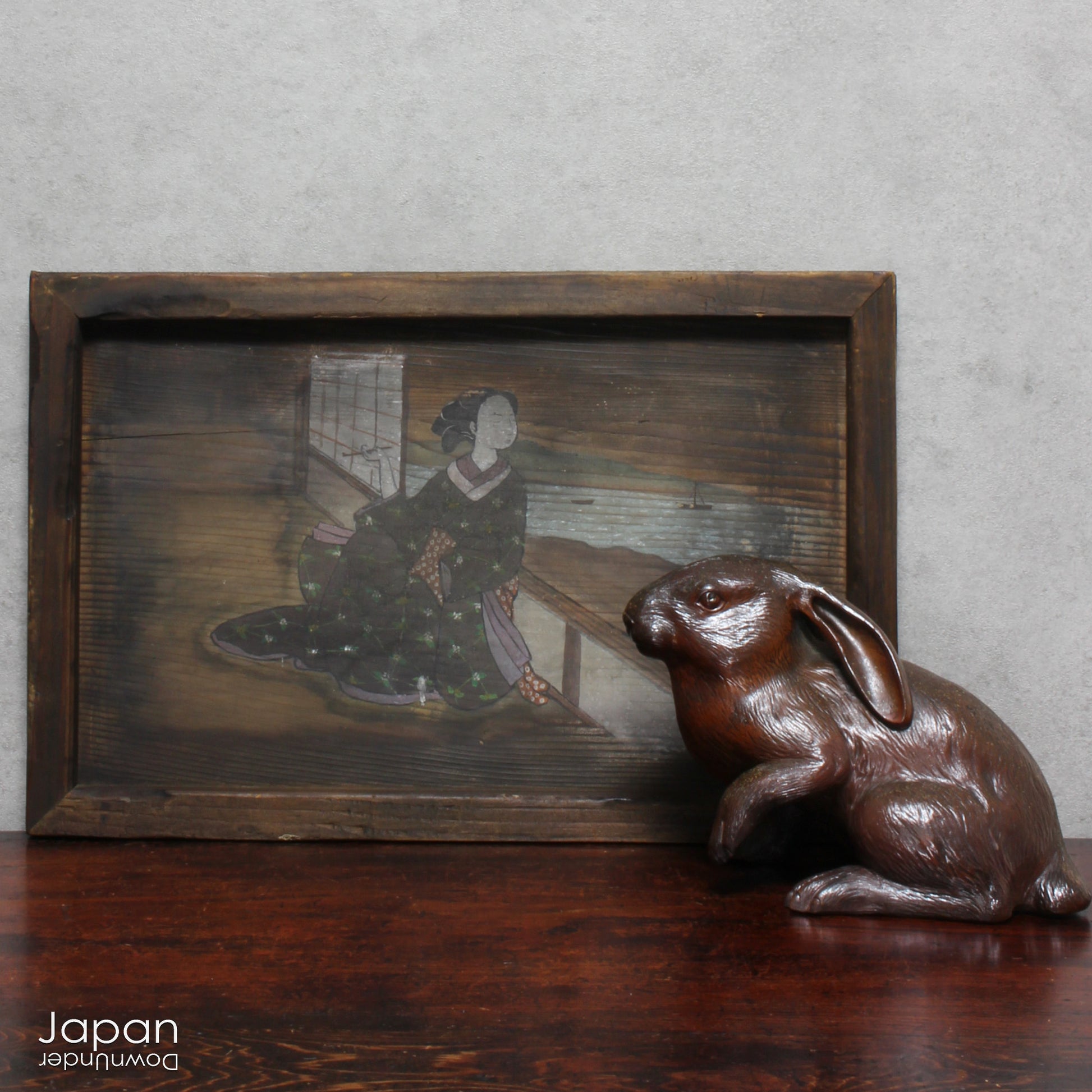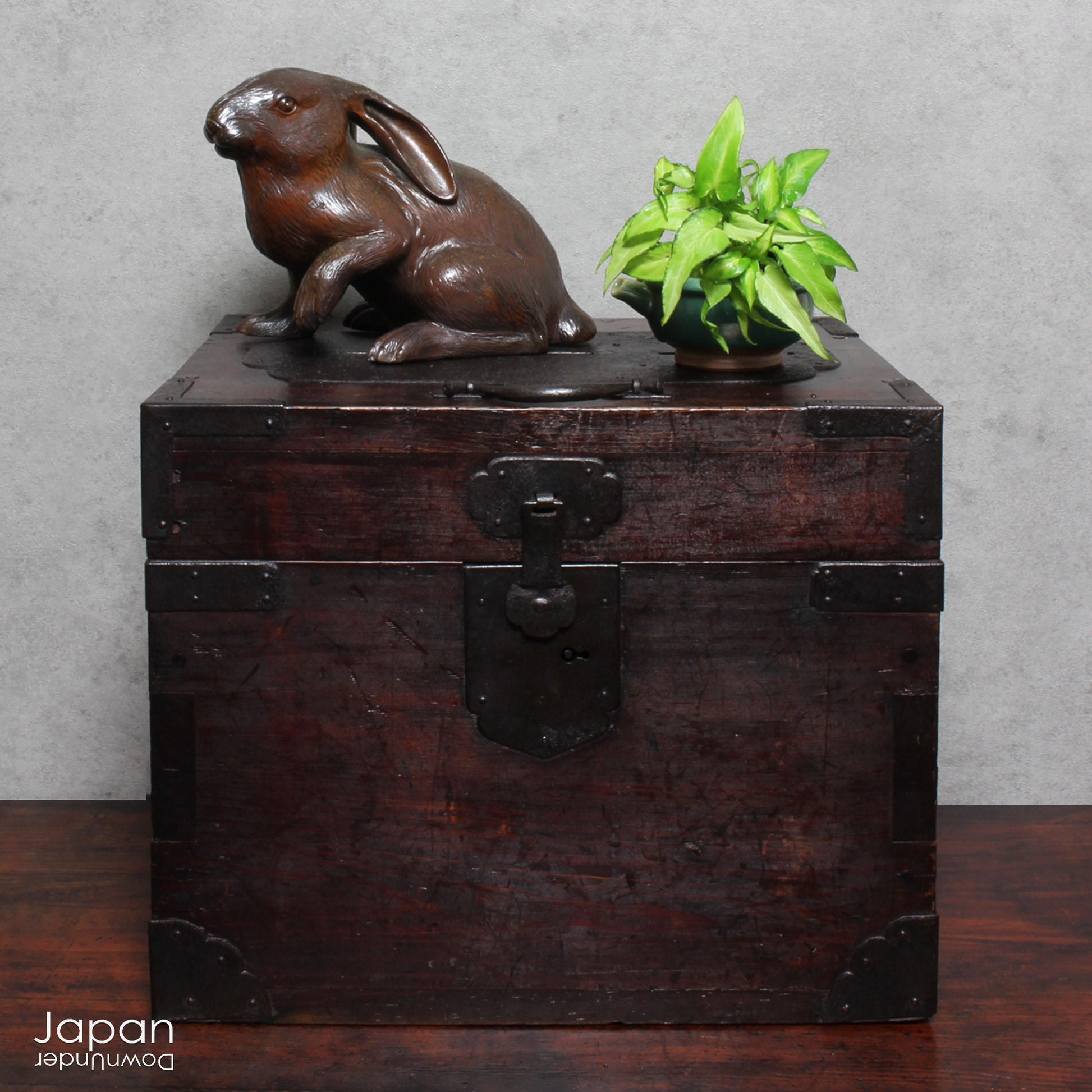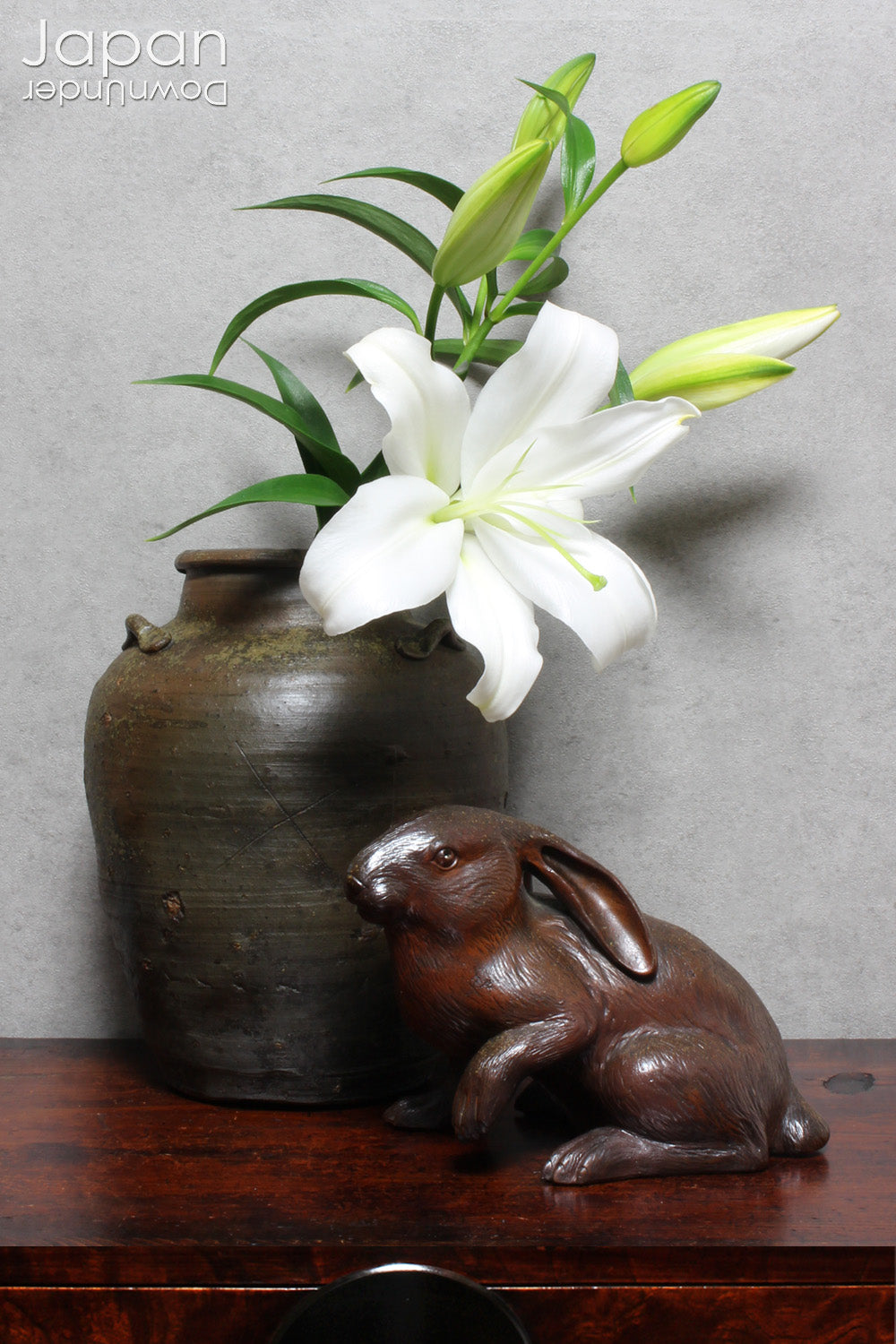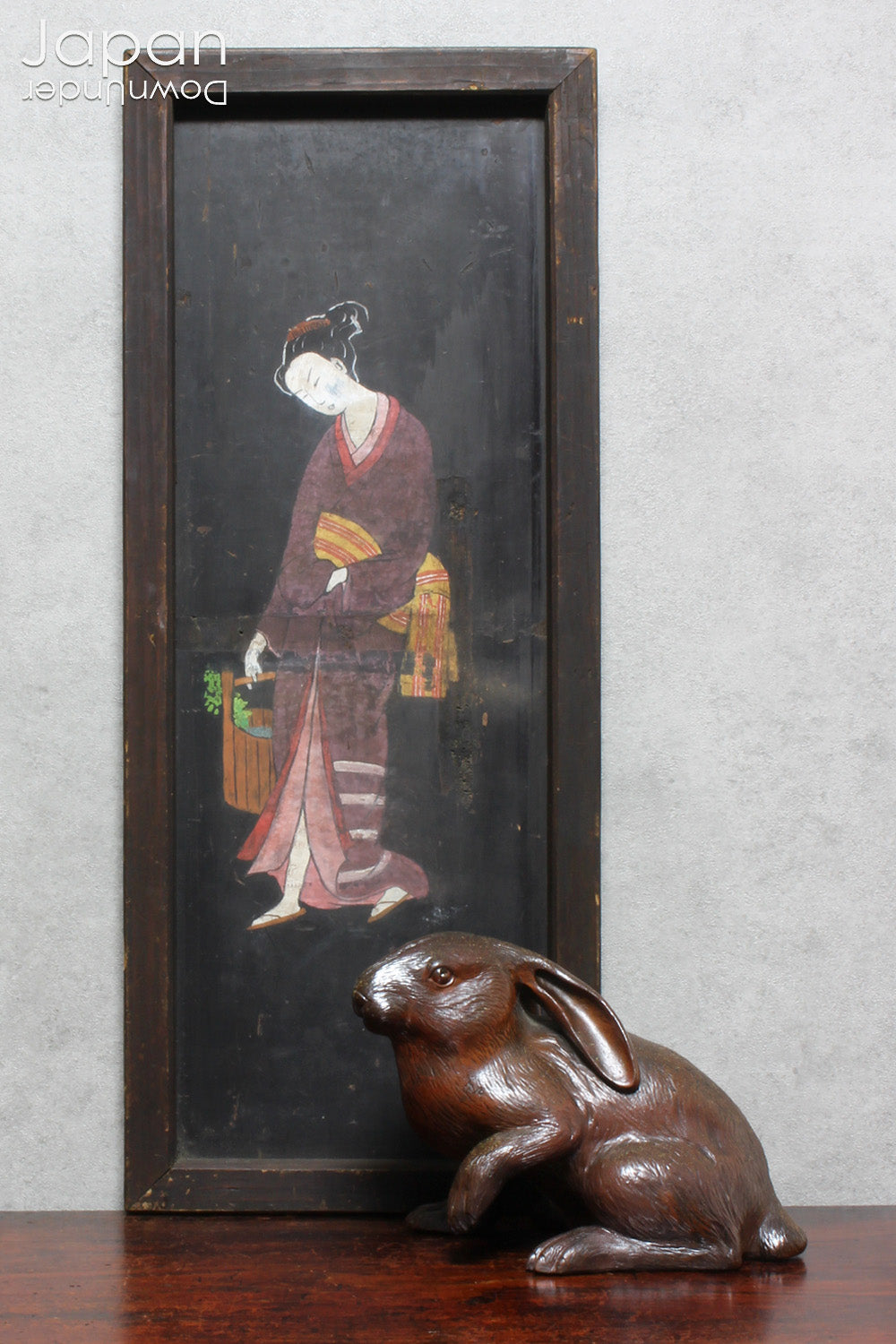My Store
antique bizen rabbit figurine, old bizen rabbit ornament, ko bizen
antique bizen rabbit figurine, old bizen rabbit ornament, ko bizen
Couldn't load pickup availability
Love Japanese Style Like We Do
Step back in time with this wonderful Meiji era Bizen rabbit sculpture, a rare treasure that brings the essence of Japanese artistry into your home. This beautifully minimalist figure radiates rustic charm, effortlessly enhancing any room with its unique character and craftsmanship. Perfect for art collectors, enthusiasts, or anyone who appreciates the beauty of history captured in ceramic form.
A Glimpse into Bizen’s Rich Legacy:
Bizen ware boasts a fascinating history dating back to the Heian period (794-1185). It was initially crafted as functional pottery for common people’s everyday use and became known for its strength and durability. In Japan’s Momoyama period (1573-1603) tea ceremony masters who had no utensils for their art, discovered aesthetic beauty in practical Bizen ware containers and incorporated them into their tea rituals. By the Meiji era (1868-1912), Bizen became highly prized not only for its utilitarian roots but also for its sculptural beauty. Figures of gods, animals, and mythical creatures were created, many destined for export, capturing the fascination of collectors worldwide. Today, Bizen pottery continues to be produced, with many pieces modeled after these historic designs.
A Masterpiece of Craftsmanship:
This Meiji era Bizen rabbit is a stunning example of the craft’s timeless appeal. It features the glossy sheen of old Bizen ware, achieved through extended, high-temperature firing processes that have solidified its rich reddish-brown hue. The iron-like hardness of the piece, reminiscent of bronze, speaks to the meticulous craftsmanship and durability of Bizen ware. Each figure from this era was individually shaped by hand after being moulded, with potters using subtle hand pressure to create unique, one-of-a-kind pieces. No two sculptures are alike, ensuring your rabbit is truly a masterpiece.
Symbol of Good Fortune and Serenity:
The rabbit, a beloved creature in Japanese culture, is one of the twelve animals of the Japanese zodiac. It is traditionally believed to bring good fortune, dispel bad luck, and symbolize success and growth. There is also a beautiful myth in Japan that a rabbit lives in the moon, making this sculpture not only an aesthetic piece but also a symbol of hope and prosperity.
This graceful rabbit, with its relaxed posture and delicately etched lines suggesting a soft coat of fur, invites tranquility into any space. It is a beautiful representation of the natural world, captured in the earthy tones and fine craftsmanship of Bizen pottery.
Condition and Collectibility:
This antique Bizen rabbit is in very good condition, with no cracks or chips. Its rustic, folk-art aesthetic makes it a perfect addition to a variety of interior styles, from traditional to contemporary. Antique Bizen figures are highly sought after by collectors, and the rabbit, in particular, is a prized piece in Japan, making this piece a rare find.
Own a Piece of History
Don’t miss your chance to own this exceptional piece of Japanese history. Whether you’re a collector or simply drawn to its beauty, this Meiji era Bizen rabbit will bring a touch of timeless elegance and cultural significance to your home.
- measures around 21 cm (8.3”) across x 16 cm (6.3”) high x 11 cm (4.3”) deep.
- weighs 1,530 gm.
(listing for rabbit figurine)
SHIPPING INFORMATION
- please read our shipping notes in shipping policy.
- we use recycle packaging wherever possible and wrap for safety, rather than appearance!
ABOUT OUR VINTAGE, ANTIQUE AND OTHER ITEMS
We list pieces we feel are worthy of display. There may be scratches, dents, fading and signs of wear and tear. We try to explain the condition of each item exactly, but may miss something.
Information regarding the item and it’s age is obtained from dealers and our personal research. We do our best to give you the correct information but please be aware that we cannot guarantee this information.
Please message us prior to purchase with any questions you may have about our products.
BIZEN HISTORY
Bizen roots are the unglazed Sueki earthenware vessels of the Oku region. Sueki stoneware was made using techniques that came from Korea in the Kofun, (250 AD - 538 AD), Nara (71 AD - 784 AD) and Heian (794 AD - 1185) periods. It was fired in an anagama at high temperatures and was generally grayish brown in colour.
In the latter Heian period the sword industy flourished and as a result the scarcity of firewood intensified. Sueki potters moved to Imbe in search of wood for their kilns. Artistic Sueki ware was abandoned and pottery that was necessary for people’s daily lives was produced, giving birth to Bizen pottery. At this time Bizen ware consisted of mainly containers, mortar bowls and jars.
From the Kamakura period (1185 - 1333) into the Muromachi period,(1333 - 1573). Bizen pottery faced an age of unprecedented mass production and purchasing. The kilns that were once up in the mountains moved further down to the foot of the mountains. By the end of the Muromachi period the mountain clay used for Bizen pottery shifted to the use of clay from rice paddies.
Demand for Bizen ware increased and so did popularity. Goods had to be loaded and sent off from the harbor, so kilns gradually moved closer to Imbe village for convenient transportation. Bizen gained the reputation as a tough and sturdy ceramic with people saying, ‘even if you throw a Bizen earthenware mortar, it doesn’t break.’ Everyday wares were fired in large quantities and Bizen spread to various regions in Japan.
From the late Muromachi period into the Momoyama period, (1573-1603), masters of the tea ceremony, who had no utensils for their art, discovered aesthetic beauty in practical Bizen ware containers. By selecting Bizen ware, for use in the tea ceremony, as water jars and flower vases, Bizen household articles grew ever more popular.
From around the Genwa year of the Edo period (1615-24), Bizen Pottery began to show signs of its prolonged decline. Tea ceremony tastes moved towards the new, more elegant and refined porcelains of Arita, Seto and Kyoto ware. Bizen was seen as crude and ugly with its exposed reddish, earthy surface. Bizen potters focused on producing ornaments that replaced the popular tea-wares of before.
In order to compete against porcelain, the technique of ‘Inbe-de’ was developed, giving pieces a lustre like that of glazed ware or copper ware. White Bizen, celadon, and colored bizen, known as Shizutani ware were also made. Shizutani pottery did not succeed and demand for Bizen pottery declined to the extent that large communal kilns could not be fired.
From the Bunmei Kaika in Meiji (1868- 1912). the age of civilization and enlightenment, European ways flourished and the traditional culture of Japan was given lower regard. Crude, earthy, undecorated wares like Bizen were not in demand. With the development of transportation systems, glazed porcelain wares of Seto and Arita could be obtained at reasonable prices and this hastened the departure from Bizen wares. Although difficult to imagine the goods that were produced in the largest quantities by kilns in Imbe were earthenware pipes and bricks!
After World War 1, the Japanese economy reached a stage where it could stand equally alongside the nations of Europe and America.
The decline in the appreciation of Japanese traditional culture was reassessed with much enthusiasm. Tea ceremony became popular amongst the newly emerging wealthy class. Tea bowls, water jars and vases were in demand and the tea wares that this class craved were Seto, Mino, Iga, Karatsu and Bizen ware pieces from the Momoyama period.
For Bizen, there was one potter who paid attention to the tea wares of the Momoyama period. His name was Kaneshige Toyo (1896-1967).
Toyo, who had once been famous in figurative handiwork decided to focus on the ‘return to Momoyama’ in his mid 30’s and began to recreate famous wares of Momoyama Bizen. Thanks to Toyo’s existence, potters of the same generation were also greatly encouraged and from this, successive potters continued to thrive under his influence. As a result, potters pursue their art independently in Bizen and it is said that there are now approximately 400 potters producing Bizen wares around Imbe.
RABBITS IN JAPAN
In Japanese folklore, there are rabbits in the moon making mochi (Japanese rice cakes). According to legend, an old man who lived on the moon decided to visit Earth. He asked a monkey, a fox, and a rabbit for food. The monkey climbed a tree and brought him some fruit, and the fox caught him a fish. But the rabbit, unable to bring anything, instead built a fire and jumped into it to be cooked! The old man pulled him out and praised his kind sacrifice, and as a reward took the rabbit back to the moon with him.
Rabbits are one of the signs of the Japanese zodiac. They are considered lucky as the Japanese kanji used to write the word rabbit is similar to the kanji meaning "get rid of " or "make vanish". People believe that rabbits will make bad luck disappear!
Rabbits are also known for jumping high. They can leap over 9 feet! Rabbits symbolize everything going up in your life - improvement and success.
Share
